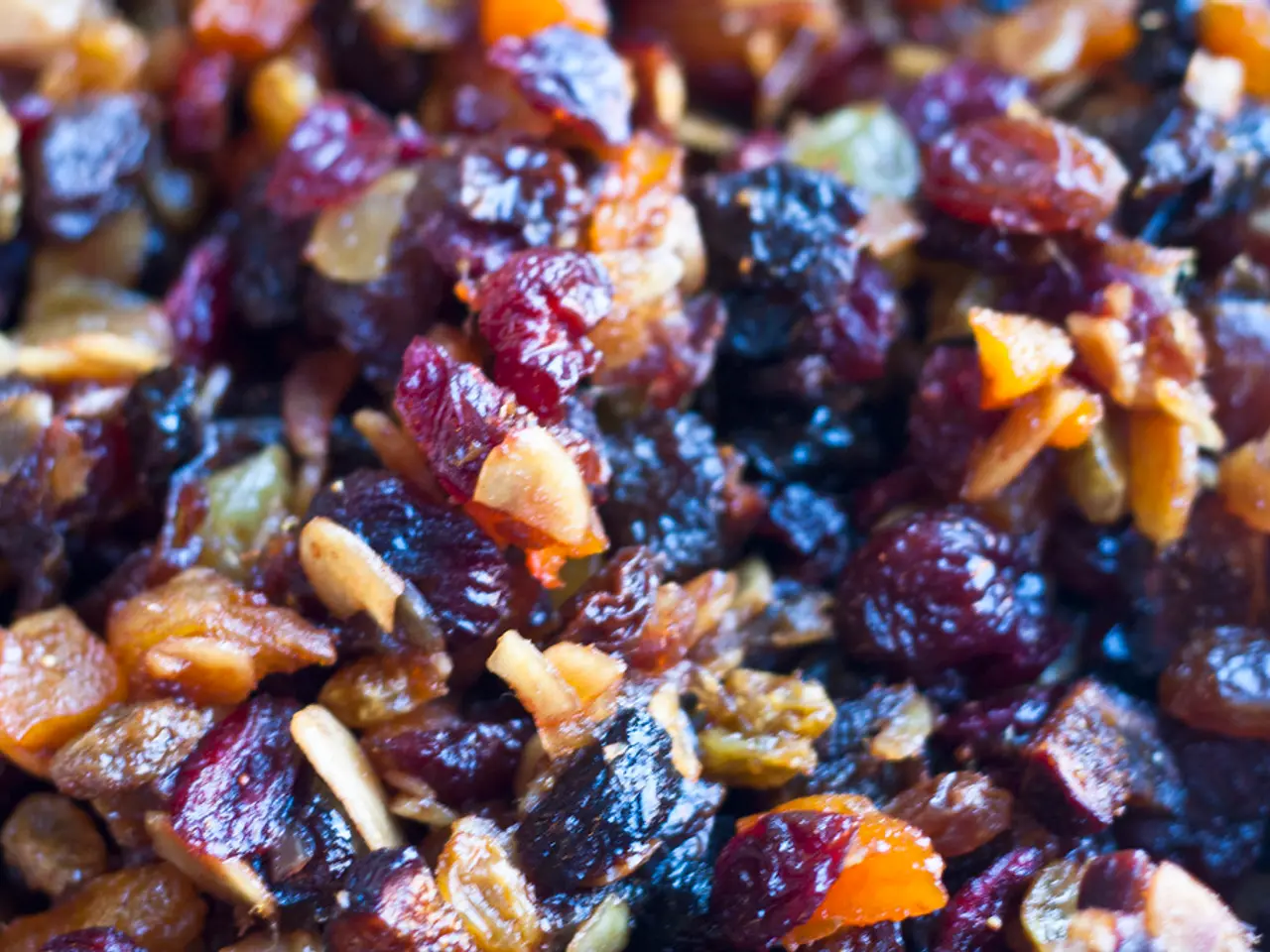The Hidden Pitfalls of Smoothies and How to Stay Healthy on the Go
Are Your "Nutritious" Smoothies Secretly Sabotaging Your Aims?
Smoothies are beloved as a quick and convenient alternative to meals, but they can quickly become a nutritional minefield if not prepared with care. In this guide, we'll show you how to craft a balanced smoothie that supports your health and fitness goals without falling prey to common mistakes.
Be Aware of Sneaky Sugar Traps
Smoothies are often laden with sweet-tasting fruits, but don't be fooled - these natural sugars can pile up quickly, leading to excess calorie consumption. Stick toLower-Sugar fruit Options: Replace high-sugar fruits(such as bananas, pineapple, and mangoes) with Berries, Avocado, or Greens which have fewer sugars and more fiber. Keep your Fruit Portion Sizes in Check: Don't go crazy with the fruits; even some low-sugar fruits contribute to calories. Aim for a Balanced Mix of Ingredients: Include a variety of nutrient-rich foods such as leafy greens, nuts, seeds, and protein-rich ingredients such as Greek yogurt or nut butters.
Protein: A Crucial Component
One of the biggest oversights in smoothie consumption is neglecting protein. Protein is essential for muscle repair, keeping you feeling full longer, and supporting metabolic functions. Include Protein-Rich Ingredients: Consider using Greek yogurt, plant-based protein powders(like pea, hemp, or soy protein), nut butters, or tofu or silken tofu to add protein to your smoothie.
Mind the Calorie Content of Fats
Don't be fooled by the 'healthy' label on nuts, seeds, or nut butters; they are high in calories. Watch Your Portions: Use sparing amounts of these calorie-dense ingredients and opt for seedless varieties when possible.
Be Careful with Sweeteners
Though marketed as 'natural', sweeteners like honey, agave syrup, or stevia can still contribute to excess calorie consumption and potentially disrupt your blood sugar levels. Let the Ingredients Shine: Instead of sweeteners, let the natural flavors of fruits(such as berries or green apples) or mild-flavored veggies(like carrots or squash) shine in your smoothie.
The Juice Dilemma
Juice, while it may seem like a healthy addition, often lacks fiber and can be high in sugars. Opt for Whole Fruits or Water-Based Liquids: Using whole fruits or water-based liquids like unsweetened almond milk or coconut water can help maintain the fiber content and avoid unnecessary calories.
Beware of Overloading On Superfoods
Adding a plethora of superfoods and supplements like spirulina or maca powder can give your smoothie a nutritional boost, but excessive use can lead to too many calories, affecting your weight loss or body composition goals. Choose Wisely: Stick to one or two key add-ins(such as a teaspoon of spirulina or a scoop of protein powder) and be mindful of portion sizes.
Be Mindful of Portion Sizes
Avoid Drinking Too Much: One of the most overlooked aspects of smoothies is the portion size. Keep your smoothie around 300-400 calories if you want it to serve as a snack, or up to 500 calories if you're using it as a meal replacement.
The Fiber Factor
Fiber is crucial for digestive health, stabilizing blood sugar levels, and keeping you feeling full and satisfied. Incorporate Fiber-Rich Ingredients: To boost the fiber content of your smoothies, consider adding leafy greens, chia seeds, or flax seeds, which provide fiber without excess calories.
Be Wary of Pre-made Smoothies
Store-bought smoothies often contain added sugars, preservatives, and high-calorie ingredients. Make Your Own Smoothies: To control what goes into your smoothie, make them at home using whole fruits, vegetables, and nutrient-dense ingredients.
Wrapping Up
Smoothies can be a delicious, nourishing way to fuel your body on-the-go, but they require thoughtful preparation to avoid the pitfalls of excess sugars, calories, and unhealthy ingredients. Take the time to craft a balanced, nutrient-packed smoothie by following these careful guidelines, and enjoy the convenience of smoothies while supporting your health and fitness goals.
- Smoothies, despite being popular alternatives to meals, can transform into nutritional minefields if not created cautiously, as they can contain sneaky sugar traps.
- Balanced smoothies are achievable by replacing high-sugar fruits like bananas, pineapple, and mangoes with lower-sugar options such as berries, avocado, or greens.
- Portion sizes should always be monitored to prevent excess sugars, even when choosing low-sugar fruits, ensuring a balanced mix of nutrient-rich foods.
- Protein-rich ingredients like Greek yogurt, plant-based protein powders, nut butters, or tofu/silken tofu are crucial for supporting muscle repair, feelings of fullness, and metabolic functions.
- Mind the calorie content of fats from nuts, seeds, or nut butters, using them sparingly and opting for seedless varieties when possible.
- Be cautious with sweeteners like honey, agave syrup, or stevia, as they can elevate calorie consumption and potentially disrupt blood sugar levels.
- Juice, often considered healthy, may lack fiber and be high in sugars. Instead, use whole fruits or water-based liquids to maintain fiber content and minimize unnecessary calories.
- Superfoods and supplements like spirulina or maca powder can provide a nutritional boost but should be used sparingly to prevent weight gain or interfere with body composition goals.







